In an age where unrealistic beauty standards and airbrushed images saturate media platforms, one mother’s bold decision has ignited a fierce debate. Instead of following what everyone else thinks, she did something empowering and accepting. She painted stretch marks on her daughter’s doll.
Kate writes books for kids.
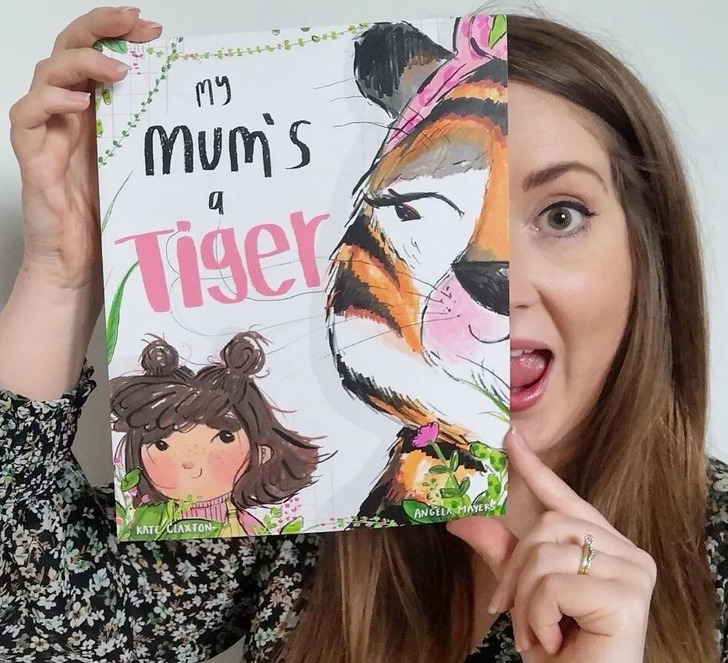
Kate Claxton, is a talented author dedicated to inspiring children. Among her notable works is the multi-award-winning picture book, “My Mum’s a Tiger!” Crafted with love and a profound understanding of the challenges faced by many, Claxton created this heartfelt story as a cherished gift for her baby’s first birthday.
Little did she know that her creation would transcend personal boundaries and resonate with countless individuals around the globe. “My Mum’s a Tiger!” serves as a powerful reflection of the experiences of numerous real-life people who grew up being told that their scars, stripes, spots, and so-called ’flaws’ should be concealed.
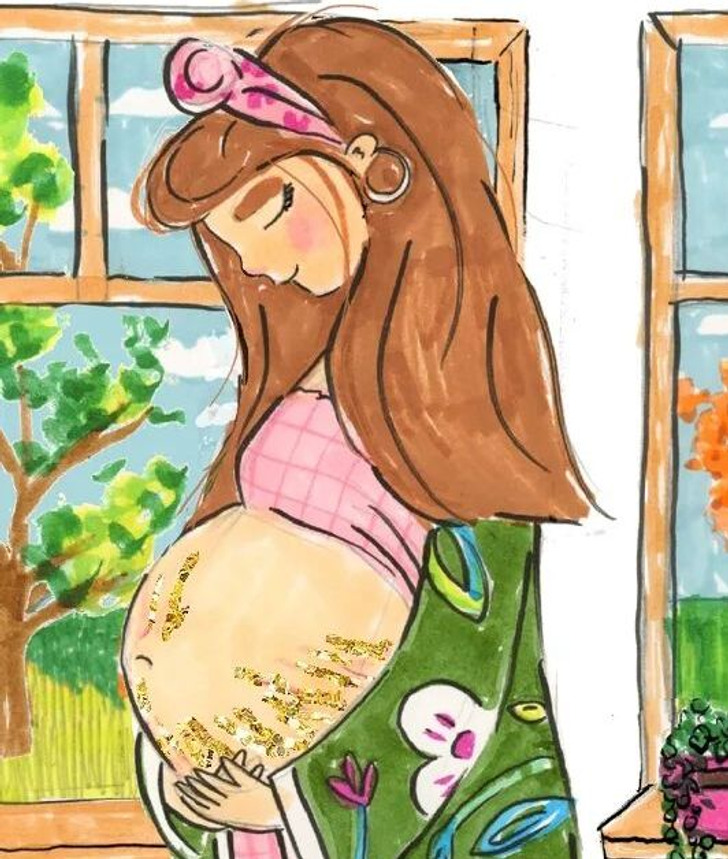
She has body-inclusive dolls for her kids at home.
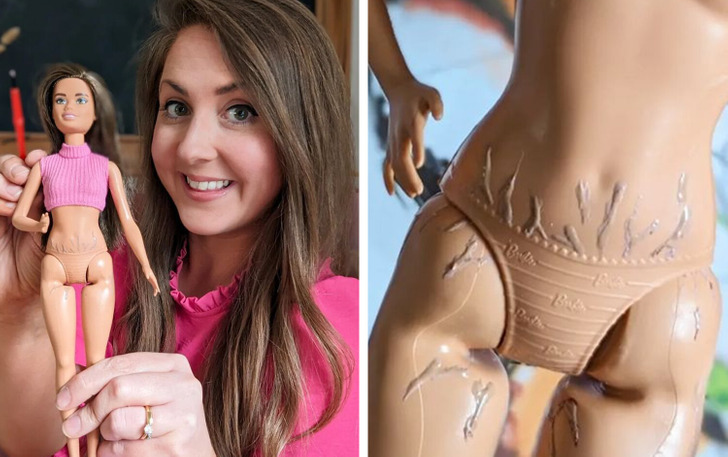
Claxton not only writes empowering books but also practices what she preaches in her own home. Recognizing the importance of body inclusivity and normalizing the beauty of individuality, Claxton provides her children with body-inclusive dolls. As much as she adores her acclaimed work, “My Mum’s a Tiger,” which beautifully embraces tiger stripes and other unique features, Claxton understands her daughter’s fascination with dolls and their ability to be dressed and undressed.
Consequently, she took it upon herself to modify one of these dolls, adding the very stripes that so many people cover up. Claxton believes in embracing differences and encourages others to do the same, offering a poignant line from her book: “Let’s take what makes us different and instead of trying to hide, let’s be more like animals and wear our marks with pride.”
Some people criticized her for painting the dolls.
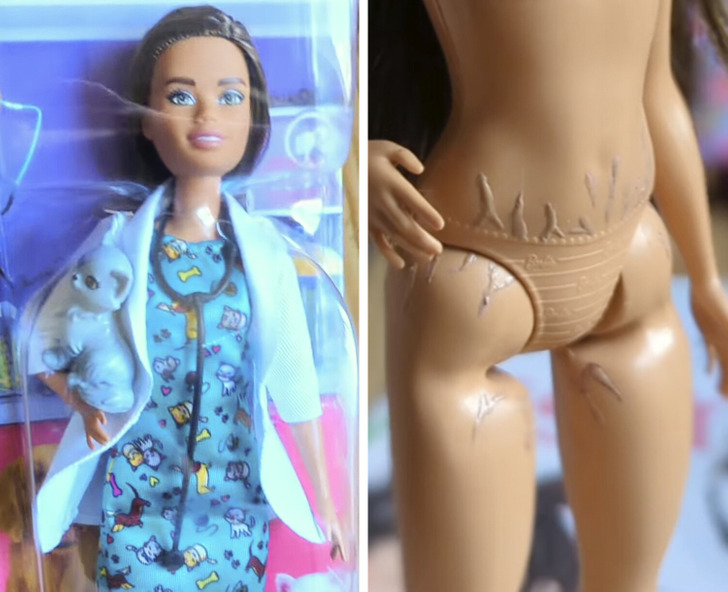
Inevitably, not everyone embraced Kate Claxton’s initiative of painting the dolls. But Claxton takes pride in the fact that her Barbie craft session sparked conversations and stirred up reactions. However, she acknowledges that reading the comments can sometimes be disheartening, particularly when encountering individuals who completely miss the point.
Among the critical comments, one person questioned the motive behind painting the dolls, asking, “Why make young girls worry more about their bodies? I’ve got no stretch marks, so maybe it would be better to teach them about being positive rather than negative about their bodies.” Another comment echoed a similar sentiment, stating, “Why make girls worry more all the time? I had three kids and no stretch marks. Make them think positive.”
She doesn’t listen to the mean comments.
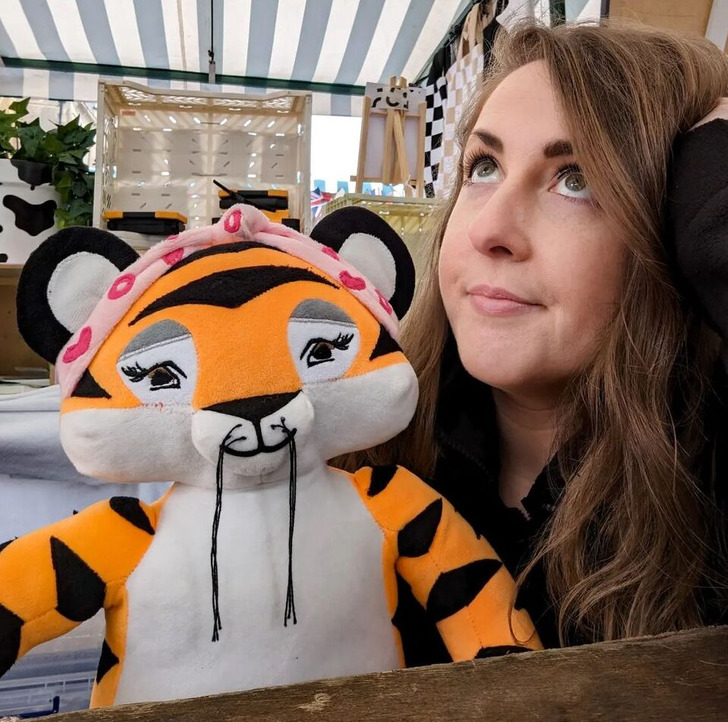
Despite encountering some less-than-supportive remarks, Claxton chooses to scroll past those comments, refusing to let them overshadow the positive impact and meaningful discussions her efforts have generated. While acknowledging these differing viewpoints, Claxton remains committed to her mission of promoting positivity and fostering a healthy body image in children.
Another mom that received a lot of attention for her unique parenting style was actress Kristen Bell. Known for her refreshing approach to raising her children, Bell brings a combination of compassion, empathy, and open-mindedness to the table. In a candid moment on her podcast, Kristen Bell openly shared a personal anecdote about her daughter’s developmental journey, revealing that her daughter wore diapers until the age of 5.
Preview photo credit reallyratherwild / Instagram
I Returned Home after Giving Birth to Find My Baby’s Room Destroyed and Repainted Black
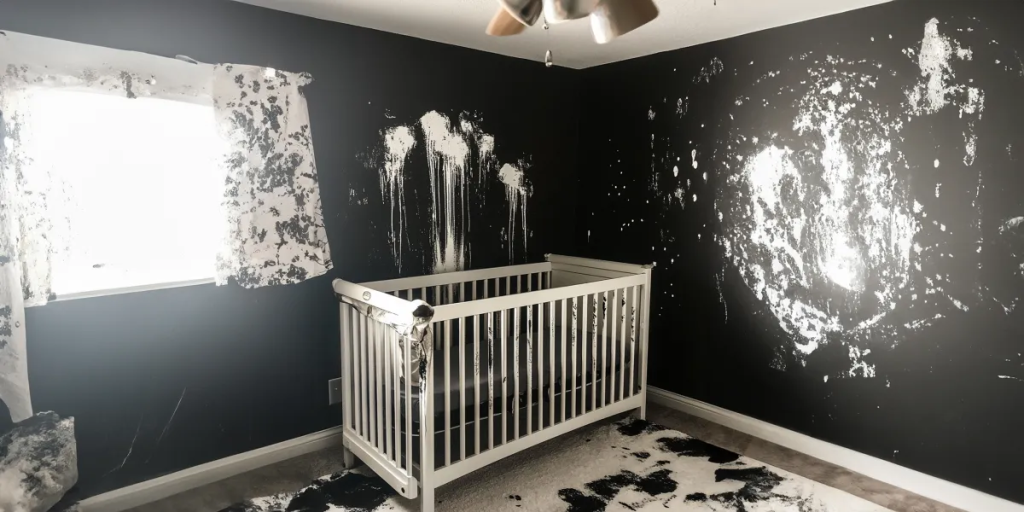
The joy of bringing my newborn baby girl home was ripped away when I stepped into her room. Her beautiful pink nursery was destroyed, the walls repainted black, the crib broken, and all the toys were gone. But it was my mother-in-law’s cruel reason that shattered me most.
The soft beep of monitors filled the hospital room as I cradled my newborn daughter, Amelia, in my arms. Her tiny fingers wrapped around mine, and I couldn’t help but marvel at her perfect features. Those tiny feet, button nose. She was PERFECT! The C-section had been tough, but holding her made it all worth it…
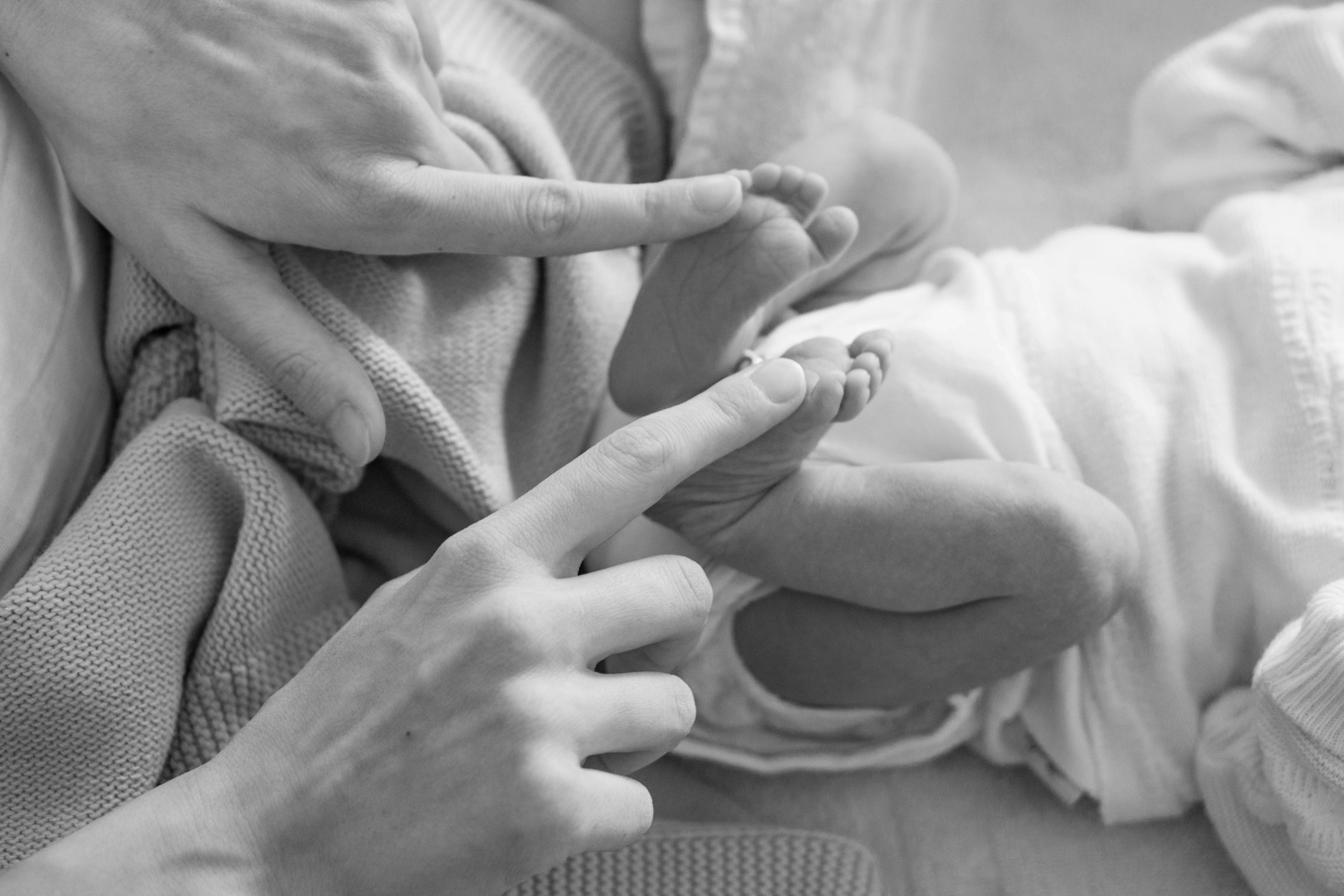
Grayscale photo of a mother touching her newborn baby’s tiny feet | Source: Unsplash
“She’s beautiful, Rosie,” my husband Tim whispered, his eyes glistening with tears.
I nodded, too choked up to speak. After months of anticipation, our little girl was finally here. I thought of the nursery waiting for her at home with the pastel pink walls, the white crib, and all the wonderful stuffed animals arranged like a little army.
Everything was perfect.
That’s when a sudden knock at the door interrupted our moment. Tim’s mom, Janet, bustled in without waiting for an invitation.
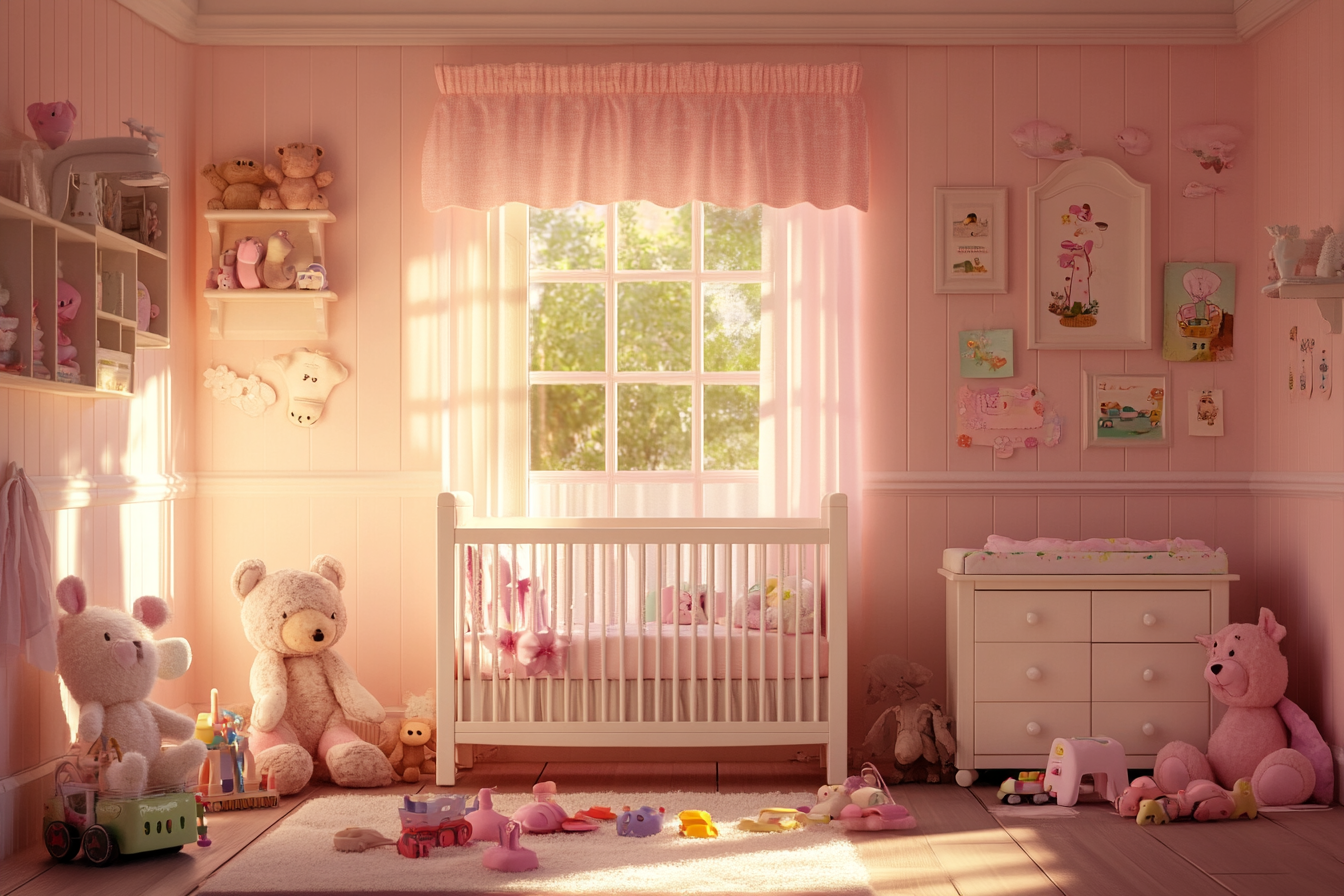
A breathtaking pink nursery with toys and crib | Source: Midjourney
“Let me see my grandbaby!” she chirped, reaching for Amelia.
As I reluctantly handed her over, Janet’s smile completely froze, replaced by a look of horror. She stared at Amelia, then at Tim, then back at the baby.
She did this a couple of times before clearing her throat, her eyes boring into mine as if she were going to swallow me whole.

A senior woman frowning | Source: Midjourney
Tim left the ward to answer an urgent phone call, leaving me basking in his mother’s scrutiny.
“There’s NO WAY this is Tim’s child,” she said, her voice dripping with accusation. “What did you do, Rosie?”
I felt like I’d been slapped. My mouth fell open, and for a moment, I couldn’t breathe.
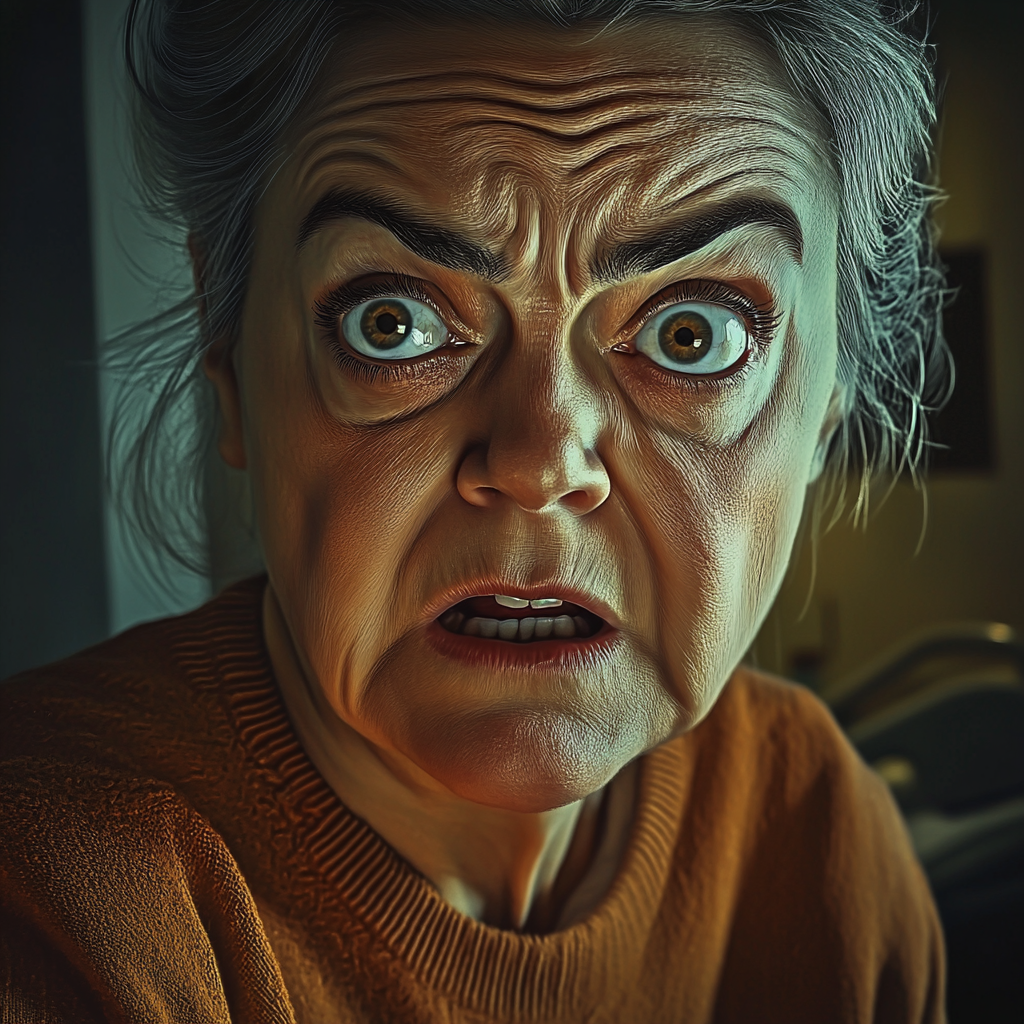
An angry senior woman | Source: Midjourney
“Janet, how could you say that? Of course, Amelia is Tim’s baby. I would never—”
“Don’t lie to me,” Janet hissed, thrusting Amelia back into my arms. “I know what I see. This isn’t over, Rosie. Not by a long shot.”
Before I could respond, Janet spun on her heel and stormed out of the room, leaving me clutching Amelia, tears stinging my eyes. I looked down at my daughter’s perfect face, her skin a beautiful deep brown.

A newborn baby fast asleep | Source: Midjourney
The thing is, our daughter, Amelia, was born with beautiful dark skin. Tim and I are both white, so yeah, it was a surprise at first. But upset? Not even close.
We were in awe of her perfection. After the initial shock wore off, we remembered that genetics can be wild. Turns out, Tim’s great-grandfather was Black, a fact his family had swept under the rug for generations.
Suddenly, it all made sense. We saw Amelia as a precious link to a part of Tim’s heritage that had been hidden away. But my mother-in-law? She didn’t see our little miracle. All she saw was a threat to her narrow-minded view of family.

A sleeping baby nestled in soft sheets | Source: Midjourney
“It’s okay, sweetie. Mommy and Daddy love you so much. That’s all that matters,” I whispered.
I rocked Amelia gently, trying to calm my racing heart. I knew this was just the beginning of a storm, but I never imagined how bad it would get.
Two weeks later, I shuffled through our front door, sore and exhausted from the demands of postpartum care. All I wanted was to settle Amelia into her nursery and maybe catch a nap.
“I can’t wait to show you your room, sweetheart,” I cooed to Amelia as we approached the nursery door.
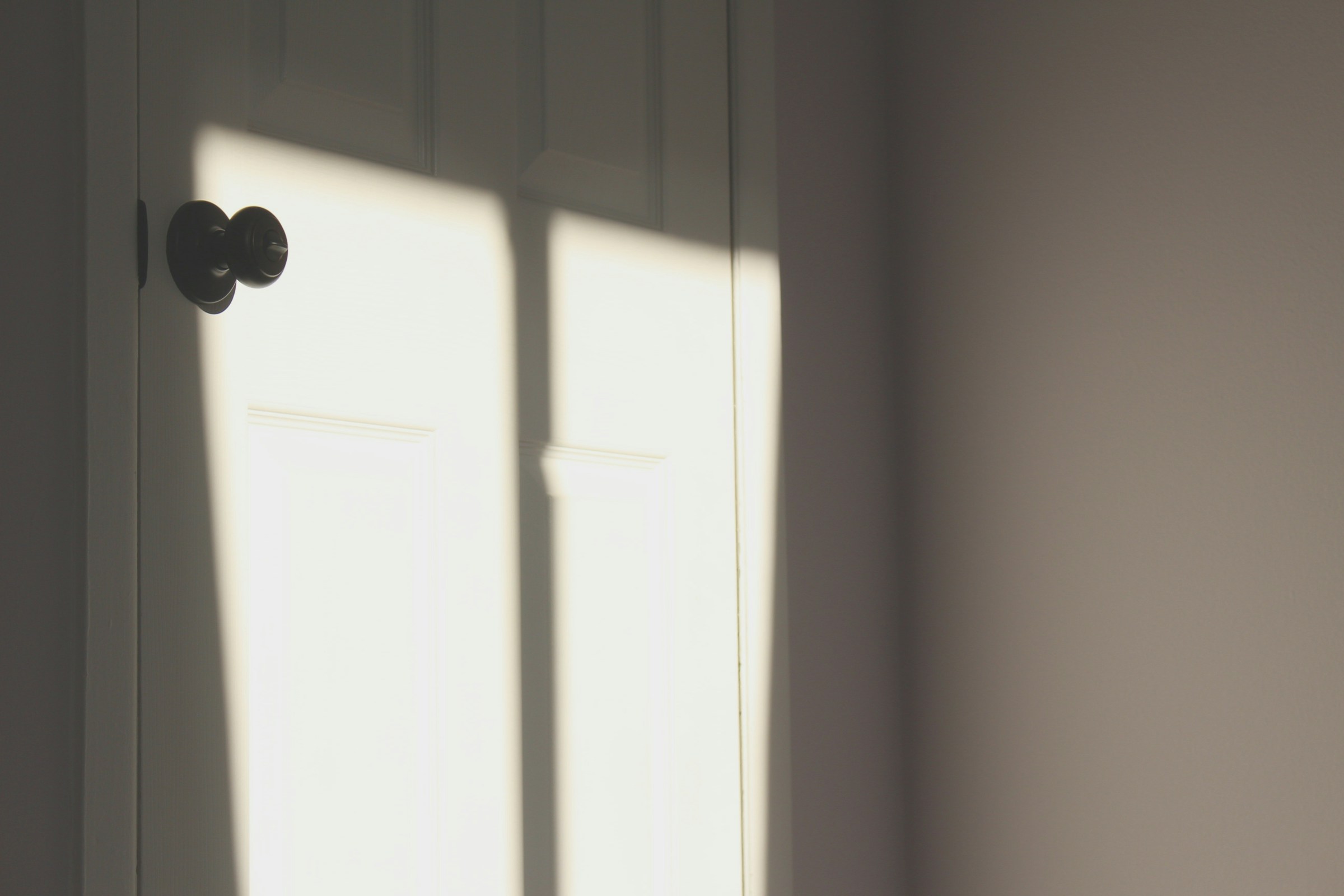
Close-up shot of a white wooden door | Source: Unsplash
I turned the handle, pushed the door open, and FROZE. My heart PLUMMETED to my stomach.
The room was… WRONG. So terribly wrong.
Gone were the soft pink walls, replaced by pitch, oppressive black paint. The floral curtains had vanished. Heavy dark drapes blocked out the sunlight instead. And the crib… the crib Tim and I had spent hours putting together? It lay in pieces on the floor.
“Oh my God! What… what happened here?” I stammered, clutching Amelia closer.

A baby’s nursery in ruins | Source: Midjourney
“I thought I’d fix the room,” Janet’s voice came from behind me. “It WASN’T APPROPRIATE anymore.”
I spun around, fury bubbling inside me. “Appropriate? This was my baby’s room! You had no right!”
Janet crossed her arms, a smug grin plastered on her face.
“She’s NOT my grandchild. Look at her. She’s not Tim’s. Both you and Tim are WHITE, but this baby is NOT. I’m not accepting this child into this family.”
I could not believe my MIL was being RACIST!
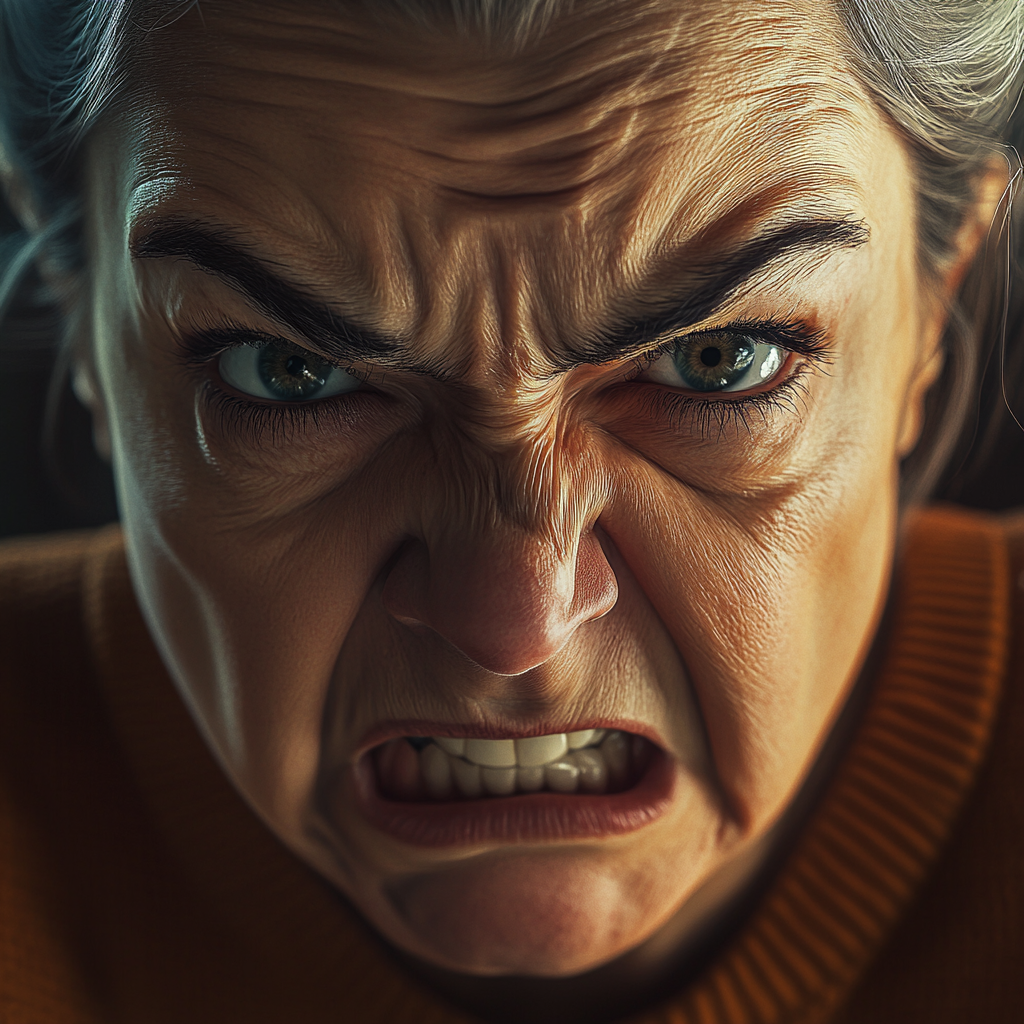
An extremely angry senior woman yelling | Source: Midjourney
I took a deep breath, trying to stay calm for Amelia’s sake. “Janet, we’ve talked about this. Genetics can be unpredictable. And as you know, Tim’s great-grandfather was Black. Amelia IS TIM’S DAUGHTER.”
“I’m not stupid,” Janet spat. “I won’t let some stranger’s child be raised in this house like she belongs here. I redid the room for when you come to your senses and bring her real family to take her.”
As soon as Janet left the room, I pulled out my phone with shaking hands.
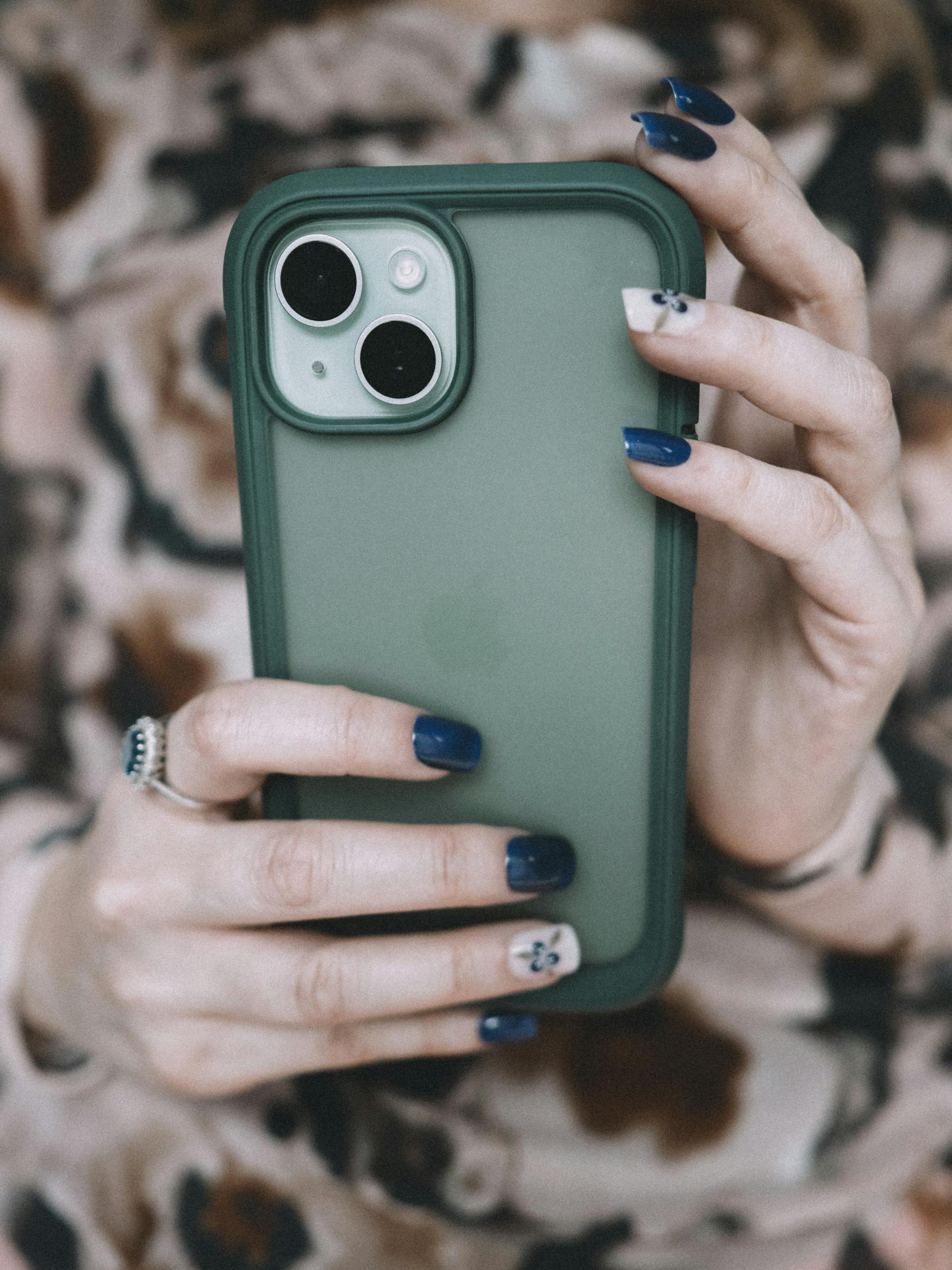
A woman holding a smartphone | Source: Pexels
“Tim,” I said when he answered, “you need to come home. NOW.”
“What’s wrong?” Tim’s voice was instantly alert.
“Your mother… she destroyed Amelia’s nursery. She’s saying Amelia isn’t yours because of her skin color. Please, I can’t handle this alone.”
“What the—? I’ll be there in 15 minutes.”

A man talking on the phone | Source: Pexels
While I waited, I paced the living room, rocking Amelia gently. My mind raced, trying to process what had happened. How could Janet be so cruel? So racist?
Suddenly, an idea struck me. I pulled out my phone again, this time opening the camera app. With Amelia still in my arms, I walked back to the kitchen where Janet was.
“Janet, can you please explain to me again why you did this to my baby’s room? It’s so utterly unfair.”

A woman talking | Source: Pexels
Janet looked up, her eyes cold. “I told you, Rosie. That child isn’t Tim’s. She’s not my granddaughter. I’m not accepting her into this family.”
“But why? Just because of her skin color?”
I kept the conversation going, making sure to capture every hateful word
“Of course! You and Tim are both white. This baby’s skin is dark. She’s clearly not his. You’ve been unfaithful, and I won’t let you trap my son with another man’s child. You’re such a disgrace to this family, Rosie.”
With that, Janet stormed to the stove, not knowing what awaited her next.

A cute baby with her eyes wide open | Source: Midjourney
I felt sick to my stomach. When I had enough evidence, I started taking pictures of the destroyed nursery.
“I’m going to show everyone exactly who my mother-in-law really is!” I whispered to myself.
I quietly slipped my phone back into my pocket and retreated to the living room, holding Amelia close. A few minutes later, Tim burst through the door, his face thunderous.
“WHERE IS SHE?”
“Kitchen.”
Tim strode into the kitchen, and I followed, my heart pounding.

Side view of a stunned woman | Source: Midjourney
“Mom, what the hell did you do?”
Janet looked up from her tea, her expression innocent. “I did what was necessary! You’ll thank me when you realize she’s not your daughter!”
Tim slammed his hand on the counter, making us all jump.
“Are you out of your mind? Amelia is MY DAUGHTER. My flesh and blood. And if you can’t accept that, you’ll never see her. Or us… ever again.”
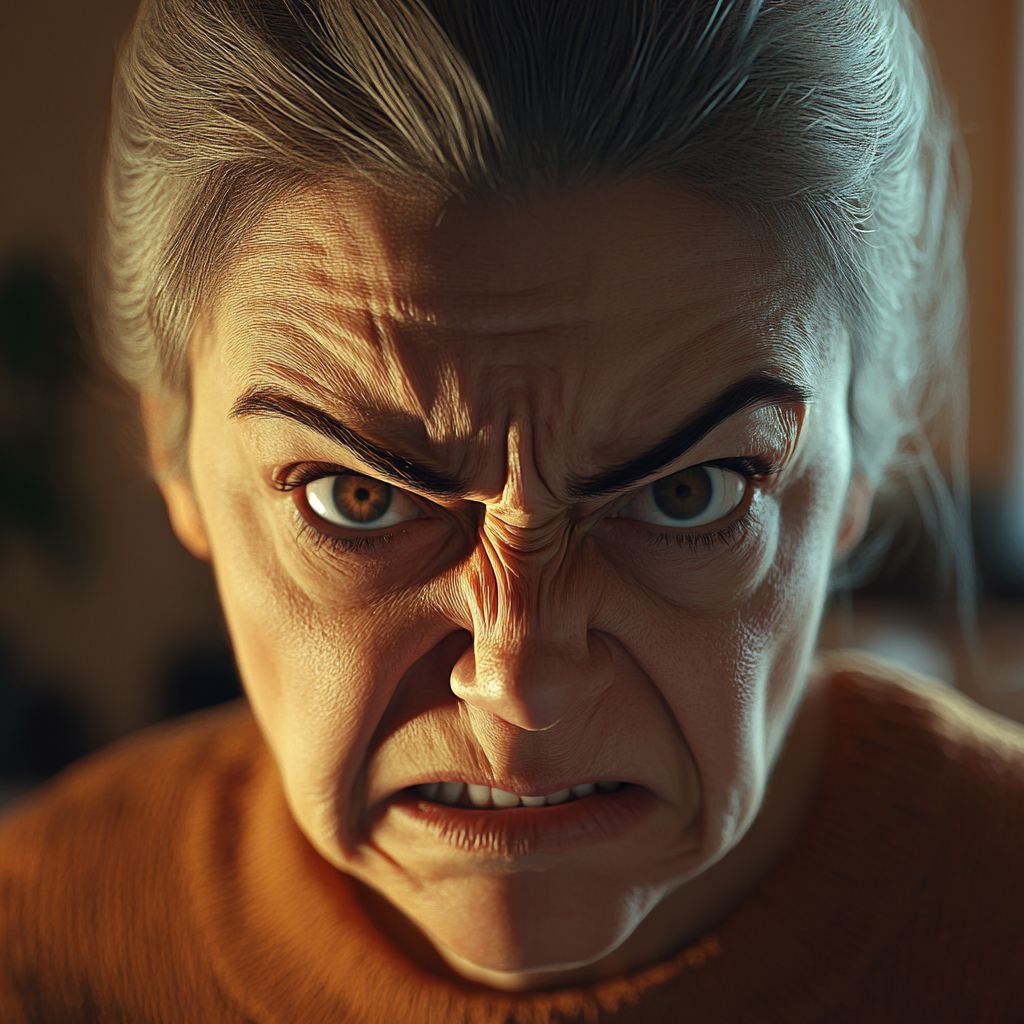
A furious senior woman creasing her brows | Source: Midjourney
Janet’s face crumpled. “What? You’re choosing them over your mother? I’m trying to protect you!”
“Protect me? From what? Love? Family? Pack your bags, Mom. You’re leaving. Now.”
After Janet stormed out of the house, slamming the door behind her, Tim and I collapsed on the couch. Amelia, miraculously, slept through it all.
“I’m so sorry, Rosie,” Tim whispered, pulling me close. “I never thought she’d go this far.”
I leaned into him, letting the tears fall. “What are we going to do? The nursery…?”

An upset woman sitting by the window | Source: Midjourney
Tim squeezed my hand. “We’ll fix it. Make it even better than before.”
“But first, I have an idea,” I said.
“We’re going to expose her for who she really is. I recorded her, Tim. When she was making those horrible comments about Amelia. The world needs to know what kind of person she is.”
Tim’s eyes widened, then a slow smile spread across his face. “Yeah, you’re right. She might be my mother. But what she did is so unfair. She needs to be taught a lesson.”

A couple holding hands | Source: Unsplash
We posted the photos and video on social media, tagging every family member we could think of. The caption read:
“Guess who needs Biology lessons? My MIL! This is what happens when she refuses to accept her own granddaughter because of the COLOR OF HER SKIN. My baby Amelia deserves better! Some people fail to understand that love & acceptance go beyond superficial differences. Black or white, my child is my UNIVERSE.
And I won’t sit back and watch anyone mock my baby, even if it’s my own MIL. If need be, this mama bear will stand up for her child like a lioness… 🥺👼🏾👩🏻🍼”

A woman using a smartphone | Source: Unsplash
The response was immediate and overwhelming. Comments poured in, condemning Janet’s actions. Family members called, offering support and apologies. Even Janet’s church group reached out, horrified by her behavior.
“I can’t believe how many people are on our side,” I said to Tim as we scrolled through the responses.
Just then, his phone buzzed with a text from his sister. “Oh my god,” he gasped.
“What is it?” I asked, peering at his screen.

A man holding a smartphone | Source: Unsplash
“Lily sent the post to Mom’s boss. Mom… she got fired.”
I sat back, stunned. “Wow. I didn’t expect that.”
Tim ran a hand through his hair. “Me neither. But… I can’t say she didn’t deserve it.”

A man smiling | Source: Pexels
Weeks passed, and slowly, life settled into a new normal. We repainted the nursery, this time a gorgeous shade of soft pink that made Amelia’s eyes shine. Tim’s sister helped us pick out new furniture, and soon the room was filled with love and laughter once again.
One afternoon, as I rocked Amelia in her new glider, Tim came in with a strange expression on his face.
“What is it?” I asked, immediately concerned.
He held up his phone. “It’s… it’s Mom. She’s demanding to talk to us.”
“What did you say?”

A concerned woman turning around | Source: Midjourney
Tim sat on the ottoman, his face hard. “I told her she’s not welcome here. Not now, not ever.”
“Good. I don’t think I could face her after what she did.”
Tim reached out and squeezed my hand. “We’re done with her toxicity. Amelia deserves better.”
I nodded slowly. “Actions have consequences. Maybe this will finally make her realize how wrong she was.”

A young woman smiling | Source: Midjourney
Just then, Amelia started fussing. I scooped her up, breathing in her sweet baby scent.
“You know what?” I said, looking at Tim. “I don’t even care about Janet anymore. We have everything we need right here.”
Tim smiled, wrapping his arms around us both. “You’re right. This is our family, and it’s perfect just the way it is.”

A baby girl smiling | Source: Midjourney
As I stood there, surrounded by the love of my husband and daughter, I knew we had weathered the storm. Janet’s cruelty had tried to tear us apart, but instead, it had only made us stronger.
As for Janet? I doubt she’ll ever recover from the humiliation. And frankly, she doesn’t deserve to. Do you think I took it too far? Was my MIL’s behavior justified in any way? Drop your comments.

Silhouette of a woman carrying a baby | Source: Pexels
This work is inspired by real events and people, but it has been fictionalized for creative purposes. Names, characters, and details have been changed to protect privacy and enhance the narrative. Any resemblance to actual persons, living or dead, or actual events is purely coincidental and not intended by the author.
The author and publisher make no claims to the accuracy of events or the portrayal of characters and are not liable for any misinterpretation. This story is provided “as is,” and any opinions expressed are those of the characters and do not reflect the views of the author or publisher.



Leave a Reply